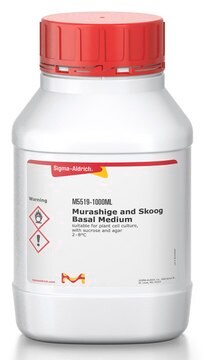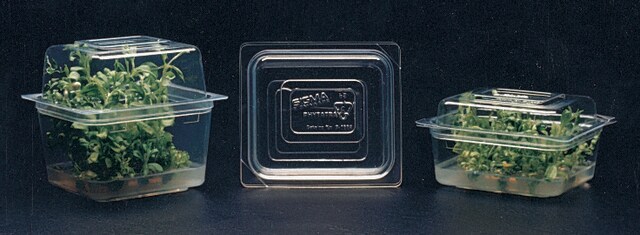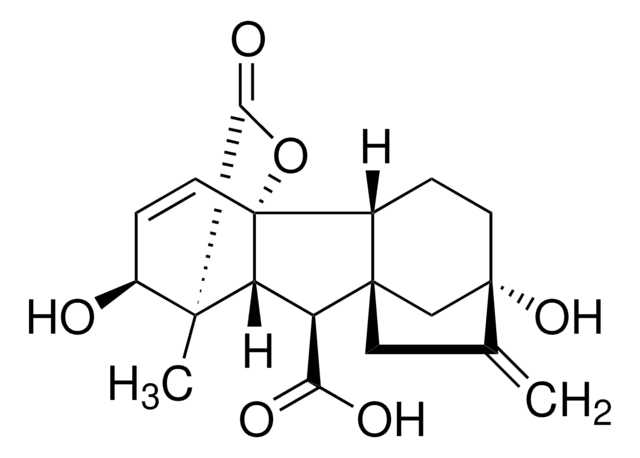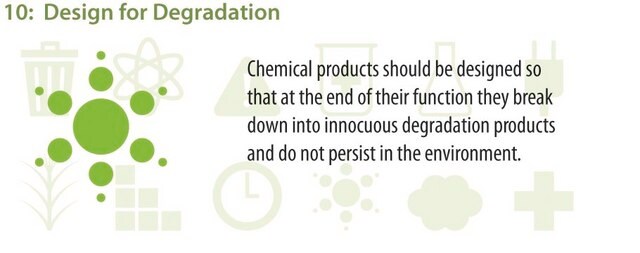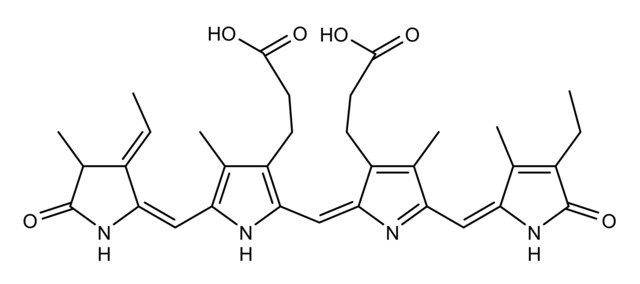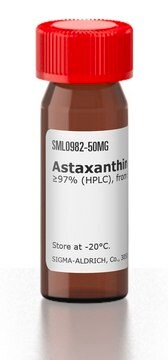Kluczowe dokumenty
V9389
Violacein
from Janthinobacterium lividum, >98% (violacein (minimum 85% violacein) and deoxyviolacein, HPLC), powder, anticancer
About This Item
Polecane produkty
Nazwa produktu
Violacein from Janthinobacterium lividum, >98% (violacein (minimum 85% violacein) and deoxyviolacein, HPLC)
Poziom jakości
Próba
>98% (violacein (minimum 85% violacein) and deoxyviolacein, HPLC)
rozpuszczalność
H2O: insoluble
acetone: soluble
ethanol: soluble
methanol: soluble
temp. przechowywania
2-8°C
InChI
1S/C20H13N3O3/c24-10-5-6-15-12(7-10)14(9-21-15)17-8-13(19(25)23-17)18-11-3-1-2-4-16(11)22-20(18)26/h1-9,21,24H,(H,22,26)(H,23,25)/b18-13-
Klucz InChI
XAPNKXIRQFHCHN-AQTBWJFISA-N
Opis ogólny
Zastosowanie
- for cell culture assays
- as a standard to determine the crude violacein concentration in ethanol extracts of D. violaceinigra str. NI28 cultures
- as a standard to identify violacein in the leaf samples of Nicotiana
Działania biochem./fizjol.
Kod klasy składowania
11 - Combustible Solids
Klasa zagrożenia wodnego (WGK)
WGK 3
Temperatura zapłonu (°F)
Not applicable
Temperatura zapłonu (°C)
Not applicable
Środki ochrony indywidualnej
Eyeshields, Gloves, type N95 (US)
Wybierz jedną z najnowszych wersji:
Masz już ten produkt?
Dokumenty związane z niedawno zakupionymi produktami zostały zamieszczone w Bibliotece dokumentów.
Klienci oglądali również te produkty
Nasz zespół naukowców ma doświadczenie we wszystkich obszarach badań, w tym w naukach przyrodniczych, materiałoznawstwie, syntezie chemicznej, chromatografii, analityce i wielu innych dziedzinach.
Skontaktuj się z zespołem ds. pomocy technicznej

